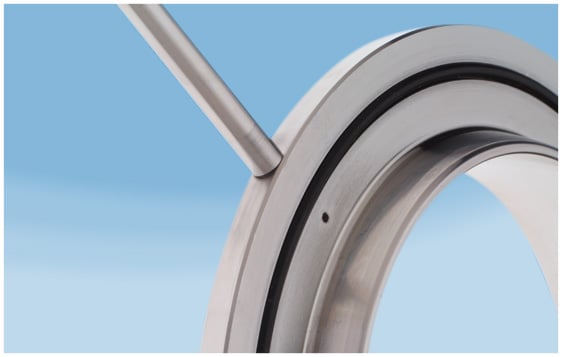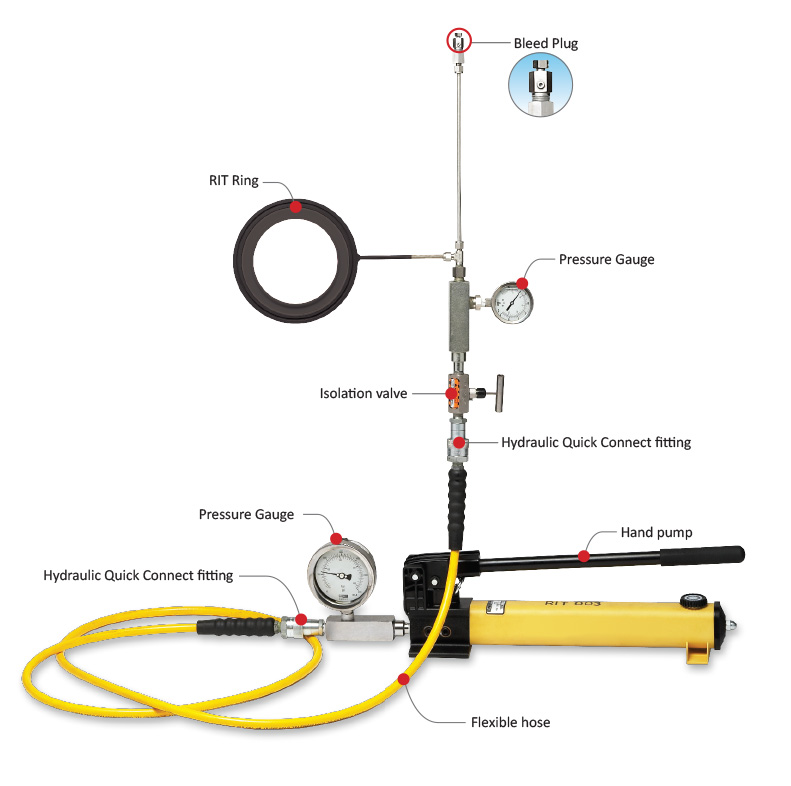Next Upcoming Event
Close

Freudenberg Oil & Gas Technologies has developed a means of testing a Vector Techlok clamp connector joint (or any connector using a Vector Techlok metal sealring) in-situ prior to, or in place of a line leak test to save time and ensure seal integrity. There are two variations of this product, firstly a modified standard Vector Techlok ring (allowing for “hot shot” delivery using stock items) or secondly an alternative design for those sealring sizes that cannot be modified.
Both types are available with an integral test pipe (as shown in Figure 1), or alternatively the test pipe can be omitted. The integral test pipe allows the Vector Techlok RIT-ring to be “retro fitted” to existing equipment, whilst RIT-rings with no test pipe are used in hubs/flanges with pre-drilled test ports and for those joints using recessed seat pockets which would prevent the exit of the test pipe.
Figure 2 shows the pressure forces applied to the sealring during RIT testing. The axial forces are resisted by the joint clamp or bolts, whilst the radial forces counteract the sealring contact forces. The pressure energized (and de-energized) forces are shown in Figure 3.
It can be seen that the sealing forces during RIT testing are significantly below normal operating sealing forces, resulting in a very stringent or “searching” test concept.
In operation, sealing forces are much higher than during RIT testing (in contrast to RTJ type gasket forces), and it is therefore sufficient to standardize on a relatively low RIT test pressure of 160 Bar (max).
Assembly and RIT testing In addition to normal assembly practice for Vector Techlok® sealrings (ref. Assembly/Disassembly pocket guide), care should be taken to ensure hub (or flange) faces are kept in good condition to function properly with the O-ring seals. Care also should be taken when positioning the test pipe. For Vector Techlok® clamp connectors, there is sufficient gap between clamp segments to allow the pipe to exit, however extra care should be taken when final bolting is performed.
Once fully assembled, the RIT test can be undertaken via a hand pump or gas bottle, etc... to achieve the standard RIT test pressure of 160 Bar. Due to the very small pressurised volume, the RIT test is both inherently safe and sensitive - even the smallest leak will be detected via a pressure loss.
Consequently, the pressure is normally allowed to stabilise and then held for 15 minutes only to complete the test. FO> can assist with all aspects of RIT testing. Please contact us for more details.
